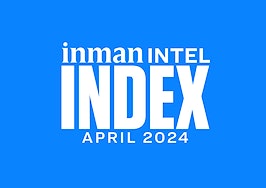You probably have heard of CoreLogic, but have you ever heard of Collateral Analytics or Quantarium?
Mortgage lenders and Wall Street are already using these powerful Automated Valuation Model (AVM) tools to package loans for the secondary market.
It’s time for the mortgage lending industry to move to an AVM-based appraisal model and to stop relying on appraisers who often lack local market knowledge, only evaluate a small percentage of features as compared to the new AVMs, and arbitrarily assign values to various types of improvements.
An appraisal is a snapshot of the value at a given moment — an opinion based upon objective data. The data, however, is open to interpretation. Who’s to say which appraiser’s value is more accurate?
Even more importantly, is the appraiser’s value more accurate than the amount that a ready, willing and able buyer is willing to pay? Is it more accurate than the prices from AVMs or the offers made by iBuyers?
Appraisal hell
In a recent column, I described the appraisal hell one of my dearest friends found herself in when she paid $20,000 over the asking price of $350,000 and the appraisal came in at $310,000.
Her appraisal epitomized everything that is wrong with the current appraisal model. Of the three comparable sales, only one was 2.26 miles from the property. The other two were 17.18 miles and 14.02 miles from the subject property.
Moreover, the appraiser was from another state, almost 50 miles away. The properties in the area where the appraiser was based were significantly less expensive for the same size home and acreage (5-10 acres.)
Furthermore, the appraiser only searched properties ranging from $250,000 to $350,000. Given the list price was $350,000 and the current offer was $370,000, he should have searched from a minimum of $300,000 to at least $375,000-$400,000 to avoid tilting (skewing) the price too low.
The appraisal also stated that the average market time in this location was 120-360 days. The truth of the matter is, most properties with this much acreage and square footage were selling within a few days of hitting the market. While vacant land may have been taking longer to sell, any property with improvements was selling in a matter of days.
When we heard about the low appraisal, I turned to Realtor.com, Trulia, and Zillow to see what values they had posted. My goal was to provide my friend’s agent with the additional ammunition she needed to persuade the sellers to lower their price as well as to get the appraised value of the property increased.
Five truths about pricing
I recently wrote a new module for my online new agent sales training course called, “Pricing Properties in Rapidly Increasing (or Decreasing) Markets.” As I researched the various pricing models the following facts were apparent:
- Agents who have high degrees of local market knowledge are often the best source for pricing the property correctly. In many cases, they don’t even need to do a comparative market analysis — they know the market that well. Unfortunately, most agents lack this level of expertise.
- Changes in months of inventory (increasing or decreasing) are the simplest predictor of whether prices will be increasing or decreasing 6-12 months from now.
- Local MLS statistics (how much the local market increased last month) are the most accurate barometer of whether a specific market area is currently increasing or decreasing in value.
- When three separate AVMs and/or two AVMs coupled with local MLS statistics agree, that snapshot of the price is usually the best estimate of the property’s value.
- Realtor.com has begun posting preliminary offers from Opendoor on many of its listings. When this offer is in alignment with local MLS price-per-foot evaluations as well as at least one other AVM, those three factors also provide another strong estimate of the property’s value.
Powerhouse AVM products that provide viable alternatives to traditional appraisals
When I was searching Realtor.com for data to help my friend’s agent negotiate a price reduction and persuade the appraiser to change his appraisal, I found the following graphic:

CoreLogic runs the MLSs for many locations in the country. This means its algorithm has the most up-to-date information as to what is happening in those local markets.
While I was familiar with CoreLogic’s AVM, I had not heard of Collateral Analytics or Quantarium. It turns out that these two tools far exceed the type of data agents see displayed on their MLS or on any of the residential AVM portals we normally use.
What’s the right price?
Before doing a deep dive into what these AVM models provide, please note that Collateral Analytics, CoreLogic and Quantarium have arrived at essentially the same price for my friend’s property.
In statistics, the accuracy of your test (or in this case, your pricing model), is strengthened when different AVMs using different algorithms independently arrive at the same valuation. In this case, the values are tightly clustered ranging from $341,500 to $347,299
Armed with this data and a concession from my friend that required her to put down $40,000 they obtained because their previous home had closed, the agents were successful in persuading the seller to reduce the price to $350,000. The appraiser still had to redo the appraisal but did not have to correct his estimate of $310,000.
AVM pricing already has its foot in the door
According to CoreLogic:
“AVMs provide fast and easy access to property valuations benefiting both lenders and consumers by reducing the costs and time delays typically associated with traditional property appraisals. AVMs also provide consistency and objectivity in the valuation process.
“While banking institutions cannot substitute AVMs for appraisals in all real estate-related financial transactions, many lenders utilize AVMs in the loan process. How and when lenders use AVMs is specific to each financial institution.”
While CoreLogic considers a wide range of information about the property and the surrounding market, it does not consider property condition, does not include a visual inspection of the property, nor does it include recent remodeling or improvements unless they are reflected in the public records.
Collateral Analytics
Collateral Analytics (CA) was built off the power and precision of its AVMs. Its website claims they are consistently rated the best for accuracy and coverage.
Their 12 different AVM models draw on decades of property data and transaction information for more than 95 percent of the U.S. housing stock and can generate instantaneous reports for virtually any residential address.
“To value each property, CA AVMs employ a number of statistical approaches. The multiple model approach combined with neighborhood-specific comparable selection guarantees the most up-to-date and precise valuations,” its website states.
Please note that CA is using the “multiple model approach” I recommended above to establish value.
Quantarium
The Quantarium Valuation Model (QVM) provides the most current and accurate property valuations to a broad spectrum of customers, including lenders, mortgage banks, brokers, originators, servicers, insurance agencies, and appraisers. As noted by CoreLogic, however, AVMs do not generally account for property condition and a host of other factors.
The Quantarium AVM has taken the next step forward that will finally make AVMs the best source for accurate appraisals due to their use of “Computer Vision” (CV).
According to the Quantarium website:
Computer Vision (CV) is powered by AI and Machine Learning to teach a computer to see and interpret in a manner quite similar to humans, whether it is photos, books, and documents or, in the case of QCV (Quantarium Computer Vision), the condition and desirability of a property.
Incorporated within QVM, Quantarium’s AI valuation model, the CV technology is trained on millions of real estate images to detect and classify objects both inside and outside the property.
The property can then be ranked and graded based on the quality of the objects and other factors for more accurate insights into the property and its valuation.

To give you an idea of how powerful the Quantarium AVM is, the QCV algorithm evaluates more than 900 factors. Moreover, its artificial intelligence has the ability to detect and incorporate shifts in prices, not only in the property itself but in its estimate of the value of the improvements.
The current appraisal model is puny in comparison — three comparable sales, a single MLS photo, and about 100 factors considered.
This is a giant leap forward in terms of appraisal that far exceeds what any human appraiser can do, regardless of how much effort they put in. While it’s still an opinion of value, it’s based on data, not an intuitive sense of what various features and the condition of the property is worth.
How can the mortgage industry make the move to an AI-based appraisal model?
As noted above, Collateral Analytics, CoreLogic, and Quantarium are already being used by appraisers, mortgage originators, and mortgage banking for establishing value.
Since Realtor.com is already posting the Collateral Analytics, CoreLogic, and Quantarium valuations on their site, Realtors, lenders, and appraisers now have quick, free access to these AVMs as well as those from their MLS, plus HomeSnap, Redfin and Zillow.
Spot shifting trends
When you click on the Realtor.com graphic, it brings up a chart that tracks the values from the three different models on a monthly basis, enabling you to see what their algorithms are showing for values.
When at least three of these are within a few thousand dollars of each other, appraisers, Realtors and lenders have a high probability that the estimate is close to the market value of the property at that moment in time.
Real-life challenges that AVMs don’t address
The difficulty continues to be what happens when you have multiple offers at a much higher price than what any of these models show. Who’s correct?
As I noted above, a local Realtor with strong market knowledge who has a strong sense of the pulse of the market may still be the best source for pricing the property.
The challenge with both the AVM and traditional appraisal approach is that the Realtor opinion of value is almost never considered, nor how many offers came in and at what price.
Coping until there is a change
The big takeaway here is that when you’re facing a low appraisal, gather the data from the seven sources cited above to see if at least three of them agree.
If Quantarium is one of the numbers in that mix, show the seller and buyer the graphic above that describes how Quantarium’s computer-vision-based AVM evaluates over 900 aspects of the property’s condition.
Also, since consumers in general place a high degree of trust in Zillow’s numbers, if the Zestimate agrees with at least two other AVM models, showing the seller and the buyer these numbers can help you negotiate the price or other concessions that will allow you to close the deal.
Sadly, because the loan process is so highly regulated, it may be years before we see substantial change. Let’s hope that all the money venture capitalists are throwing at the mortgage lending and appraisal process makes this important shift happen much sooner than later.
Bernice Ross, president and CEO of BrokerageUP and RealEstateCoach.com, is a national speaker, author and trainer with more than 1,000 published articles. Learn about her broker/manager training programs designed for women, by women, at BrokerageUp.com and her new agent sales training at RealEstateCoach.com/newagent.













